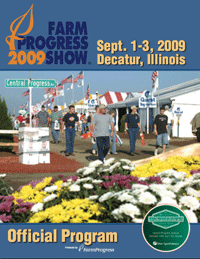 Without in-season plant tissue testing to see if crops are nutrient deficient, you may be leaving yield in the field. Unseen nutrient deficiencies can stunt growth, harm plant health and limit yield.
Without in-season plant tissue testing to see if crops are nutrient deficient, you may be leaving yield in the field. Unseen nutrient deficiencies can stunt growth, harm plant health and limit yield.
Tennessee Farmers Cooperative began working with A&L Labs this year to train co-ops on proper sampling, and some are adding this service to their precision agriculture programs, according to this story in Tennessee Cooperator magazine.
The only way to know whether a crop is adequately nourished is to have the plant tissue analyzed during the growing season, says Oscar Ruiz, agronomist with A&L Laboratories in Memphis.
“Many times a low nutrient status may not be obvious — it’s a ‘hidden hunger,’” says Oscar. “While soil tests are great for determining a base line for a fertility program, a plant tissue sample can help make crucial in-season adjustments that can improve the crop’s nutrition and increase profit.”
Although it’s been used heavily in the horticulture industry for years, plant tissue sampling is now becoming an important tool for row-crop growers who are employing more intensive management practices on their farms.
“The Co-op system relies heavily on preseason soil tests to formulate fertility programs for farmers, but that doesn’t account for in-season nutrient deficiencies that can occur because of weather, variety differences, and cropping systems,” says Alan Sparkman, TFC agronomy marketing manager. “Tissue sampling can allow growers to really fine-tune nutrient management and correct deficiencies before yields are negatively impacted. For those who are using precision agriculture practices on their farms, this becomes the next logical step.”
Weakley Farmers Cooperative, which has locations in Martin, Gleason, and Greenfield, recently established a precision agriculture program and added tissue sampling to its menu of services, which also includes grid sampling, variable-rate lime and fertilizer application, and nitrate nitrogen testing. The Co-op also hired a precision agriculture specialist, Emily Clark, a recent University of Tennessee at Martin graduate and TFC training program participant, to handle these new programs.
After receiving extensive training from A&L Labs technicians, Emily began tissue sampling corn and soybean fields this spring and summer and says the results have been “eye-opening” for her and the growers.
“These tests show something we’ve never been able to see before — what the plant’s nutrient status looks like in the middle of the growing season,” says Emily. “Even if you took soil samples this winter and everything came back fine, you still may not be getting what you need into that plant. These tests can either give producers peace of mind that their fertility program is doing what it should or find problems that we can fix so the crop will reach optimal productivity.”
 It’s that time. Time for the 2009 Farm Progress Show.
It’s that time. Time for the 2009 Farm Progress Show. .
.
 For farmers who want a simple steering console with precise auto-steering performance, check out the
For farmers who want a simple steering console with precise auto-steering performance, check out the  We are happy to introduce a new and improved Precision.AgWired.com Podcast, a monthly feature with news and information important for growers who want to produce more efficiently. Thanks to
We are happy to introduce a new and improved Precision.AgWired.com Podcast, a monthly feature with news and information important for growers who want to produce more efficiently. Thanks to  Since we know that many farmers are using social networking services like Twitter and Facebook I thought you’d be interested to learn about a couple of opportunities to learn more while you’re attending the Farm Progress Show next week.
Since we know that many farmers are using social networking services like Twitter and Facebook I thought you’d be interested to learn about a couple of opportunities to learn more while you’re attending the Farm Progress Show next week.  The yield monitor is a valuable instrument during harvest, giving you instantaneous yield numbers as you make each pass in the field. But is your system giving you added value?
The yield monitor is a valuable instrument during harvest, giving you instantaneous yield numbers as you make each pass in the field. But is your system giving you added value? Top farmers are using this precision agriculture tool to record results from specifically designed split-planter tests to make buying decisions on hybrids, varieties, traits, insecticides, fungicides, fertility levels, tillage techniques and much more. Below, we’ve included numerous links to stories that discuss these topics.
Top farmers are using this precision agriculture tool to record results from specifically designed split-planter tests to make buying decisions on hybrids, varieties, traits, insecticides, fungicides, fertility levels, tillage techniques and much more. Below, we’ve included numerous links to stories that discuss these topics. A new 800-gallon, lighter footprint addition to the Patriot self-propelled sprayer line-up was
A new 800-gallon, lighter footprint addition to the Patriot self-propelled sprayer line-up was  One important item on your list of daily chores should be to help educate our customer, the consumer. To that end, National Corn Growers Association (NCGA) has a site called
One important item on your list of daily chores should be to help educate our customer, the consumer. To that end, National Corn Growers Association (NCGA) has a site called  If you’re a Facebook or Twitter user, you can now connect with Raven Industries to learn more about their precision agriculture offerings and get the latest information.
If you’re a Facebook or Twitter user, you can now connect with Raven Industries to learn more about their precision agriculture offerings and get the latest information. • Create a backup of your spring information.
• Create a backup of your spring information.